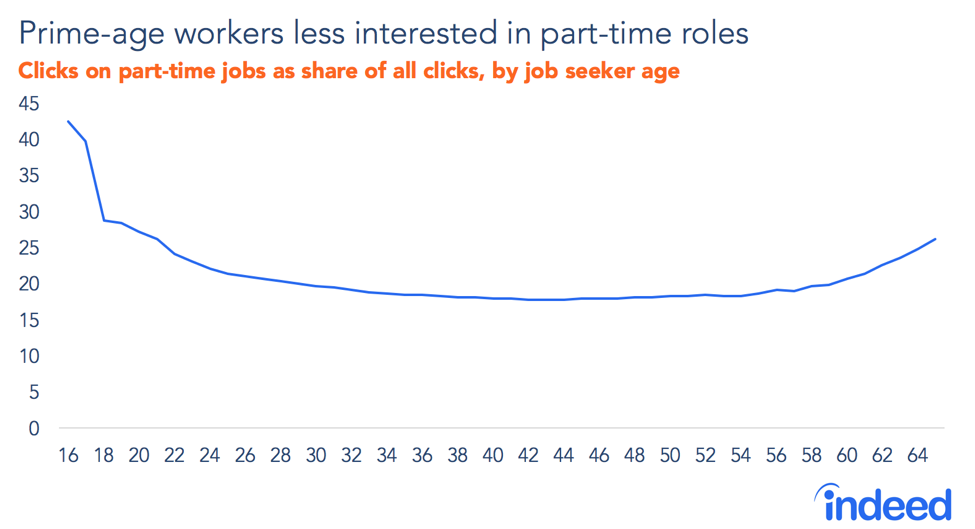Over 25 million people work part-time in the US, accounting for about one-sixth of the labor force, according to the most recent Bureau of Labor Statistics (BLS) Current Population Survey. Workers of different backgrounds, education levels, and ages choose part-time hours for many reasons, with school attendance and family or personal obligations the top two, BLS research shows. Indeed’s job search data offer a detailed view of how job seeker preferences for part-time work differ depending on age.
The chart above shows clicks on Indeed part-time job postings as a share of all job posting clicks. We have segmented the data by job seeker estimated age to illustrate differences in part-time work preferences. It shows an understandably strong interest in part-time job postings among younger workers and a pick-up of interest at age 58 as people near retirement.
Segmenting these data by age highlights the nuances behind job seekers’ preference for part-time job postings. Workers age 16-17 clearly show the most interest, with about 30% of their clicks going to postings classified as part-time. At age 18, when young people typically finish high school and often start full-time work, interest in these postings drops substantially. Interest continues to decline through age 24, when many who were working part-time while continuing their education finish school.
Preference for part-time job postings declines gradually until about age 44, albeit at a diminishing rate, and doesn’t rebound until age 58. Then, interest in part-time postings increases through age 65, the years when many workers partially retire, staying in the labor force by taking flexible jobs.






